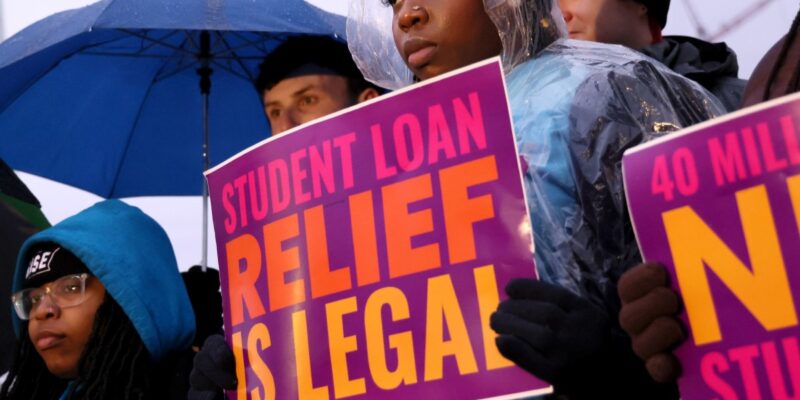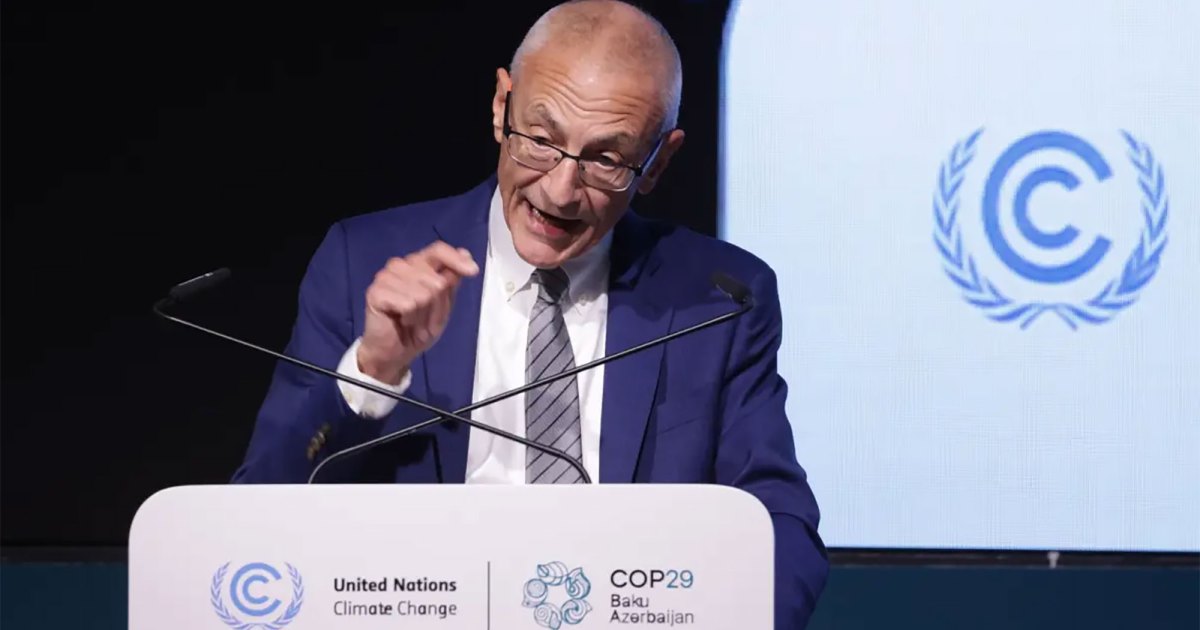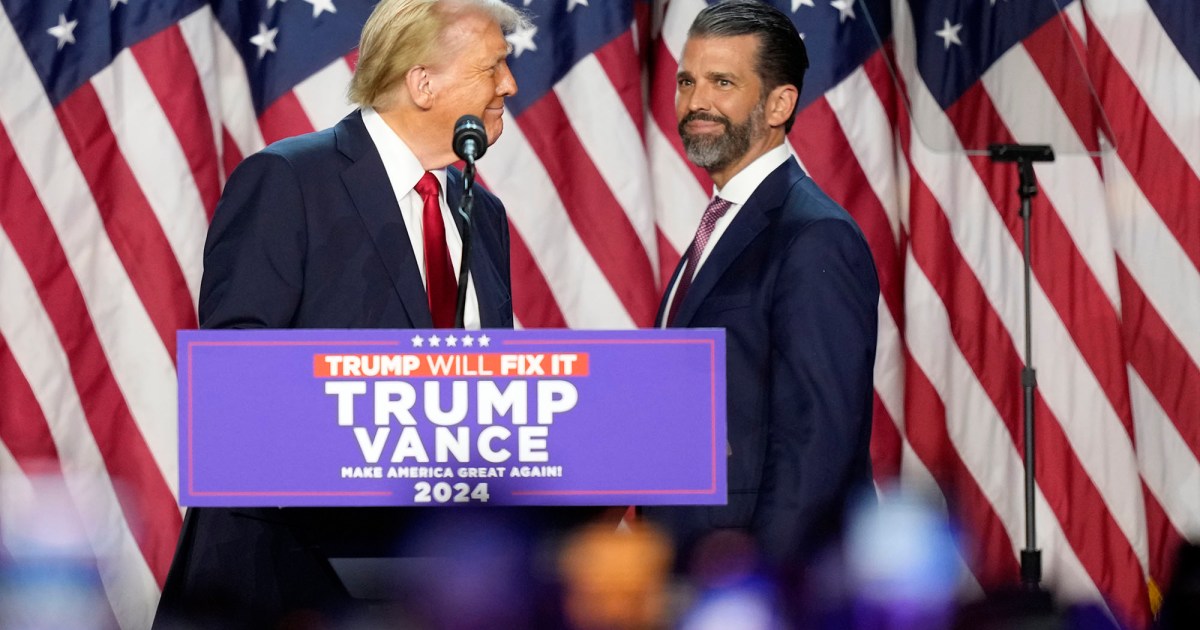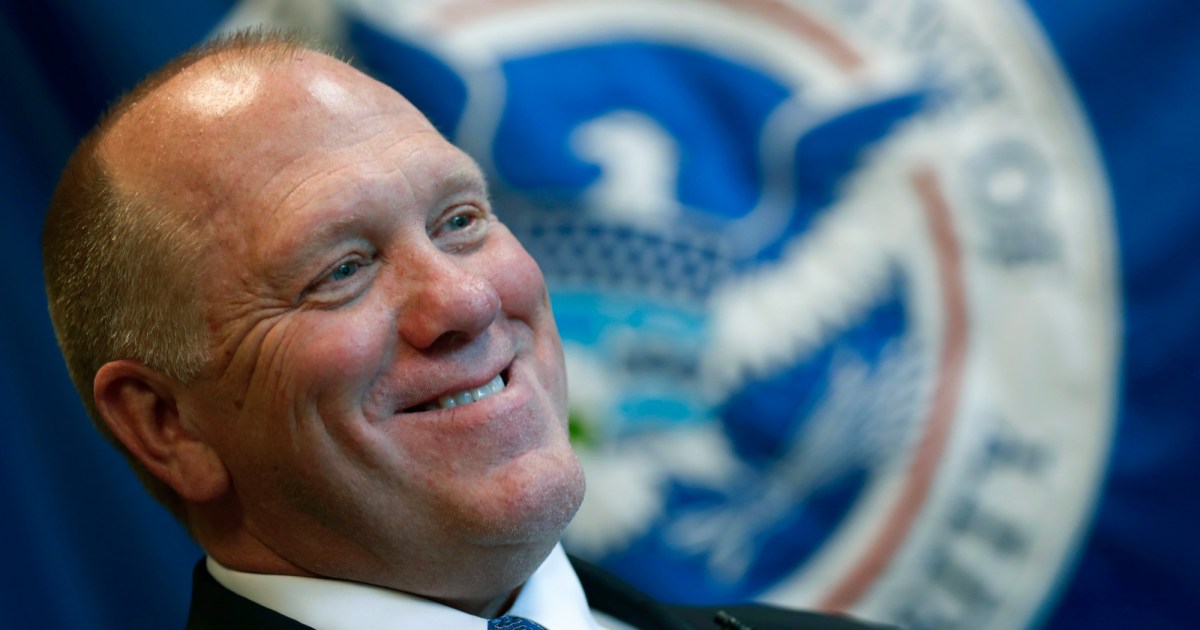
There are more than 45 million people with student loans, and many more who are gearing up to go to college at a time when tuition is at record highs: The average annual cost of a private university hit nearly $60,000 in 2024.
The next president will have the power to either ease that financial burden or aggravate it. And while Donald Trump’s bluster on the campaign trail has not included a lot of clarity on his policy plans, his public statements, along with the actions of his previous administration, set out a roadmap for the many ways he will try to gut the affordability of higher education for future students—while sinking those who already have student debt into a deeper financial hole.
What’s more, the agenda authored by the conservative Heritage Foundation for a future Republican administration, known as Project 2025, also offers a blueprint. Trump has tried to distance himself from Project 2025, but because it was written by some of his closest allies, it is likely that, should Trump win in November, pieces of the project will become policy priorities.
Here’s what a second Trump term could mean for student debt:
Defunding and closing the Education Department could decimate college affordability for low-income students: At a rally in Wisconsin last month, Donald Trump said that he wants to shut down the Department of Education should he return to the Oval Office. “I’m dying to get back to do this,” he said. “We will ultimately eliminate the federal Department of Education.”
As president, Trump proposed cutting nearly $4 billion from the Pell Grants reserve fund—and redirecting half to NASA for space exploration: “So that we can return to Space in a BIG WAY!”
Trump couldn’t close the Education Department singlehandledly: it would require an act of Congress. But defunding the department would have far-reaching implications for education funding. A key one: The department administers $39 billion of Pell Grants, scholarships awarded to students from low-income backgrounds. About half of Pell Grants go to students whose families earn less than $20,000 per year. Without the department, it’s unclear who would distribute and oversee Pell Grants; if they’re thrown into chaos, low-income students will have little choice but to take on additional student loans. Trump has shown a willingness to compromise this crucial source of financial aid in the past: During his presidency, he proposed cutting nearly $4 billion from the Pell Grants reserve fund—and redirecting half of that to NASA for space exploration: “So that we can return to Space in a BIG WAY!” Trump tweeted at the time.
Ending Public Service Loan Forgiveness: Signed into law by President George W. Bush in 2007, the PSLF program promises to cancel the remaining debt for public servants, from police offices and prosecutors to public defenders, who have made 10 years of payments on their loans. In the last four years, the Biden-Harris administration has awarded $74 billion in student debt relief to public servants who’ve met PSLF’s payment requirements.
But when the first wave of borrowers qualified for relief in 2017, Trump’s Education Department rejected 99 percent of applicants. His administration then proposed a 2021 budget that would have nixed PSLF entirely. That did not pass, but the goal remains: Project 2025 includes an explicit recommendation to terminate PSLF should there be a Republican president.
Hampering other forms of student debt relief: In June 2023, the Supreme Court struck down President Biden’s attempt to cancel up to $10,000 of student debt for low- and middle-income borrowers. Trump called the decision a “massive win” that halted an “unconstitutional student loan gimmick.”
In the wake of this decision by the Supreme Court, the Biden-Harris administration sought to provide relief another way: They launched the Saving on a Valuable Education (SAVE) Plan, an income-driven repayment program that would lower required payments for many borrowers, and forgive the remainder of their debt after somewhere between 10 and 25 years, depending on the original loan balance. Within months, more than a dozen Republican-led states had sued to shut down the program. Those lawsuits are ongoing. And it is safe to say that a Trump-Vance administration would do little to stop them: In June, Trump called Biden’s latest student debt relief efforts “vile,” while Vance has encouraged Republicans to fight student loan cancellation “with every ounce of our energy of power.” Plus, Project 2025 suggests that a future Trump administration should end all existing income-driven debt repayment plans because they are too generous.
Weakening debt relief for borrowers defrauded by for-profit schools: When Betsy DeVos served as Trump’s education secretary, she rewrote an existing department rule that discharges the loans of students who attended fraudulent colleges. Her version shrunk the amount these loans could be canceled, limiting them to just three cents for every dollar spent on their degrees. Congress passed a bipartisan resolution to overturn DeVos’s rule, but Trump vetoed it, leaving her restrictions in place until Biden undid them upon taking office. Should Trump return to the White House, this relief for borrowers would very likely be on the chopping block.
Causing some student loans to accrue more interest: In 2018, the Trump administrations budget proposed ending subsidized Stafford loans, which don’t accrue interest while undergraduate students are in school. This change would lead to thousands of additional dollars of debt for borrowers, many of whom are also from low-income families—about 70 percent of subsidized loan borrowers also qualify for Pell Grants. In 2018, the Center for American Progress estimated that an end to subsidized loans would saddle nearly 6 million students with an additional $2.8 billion in costs each year.















